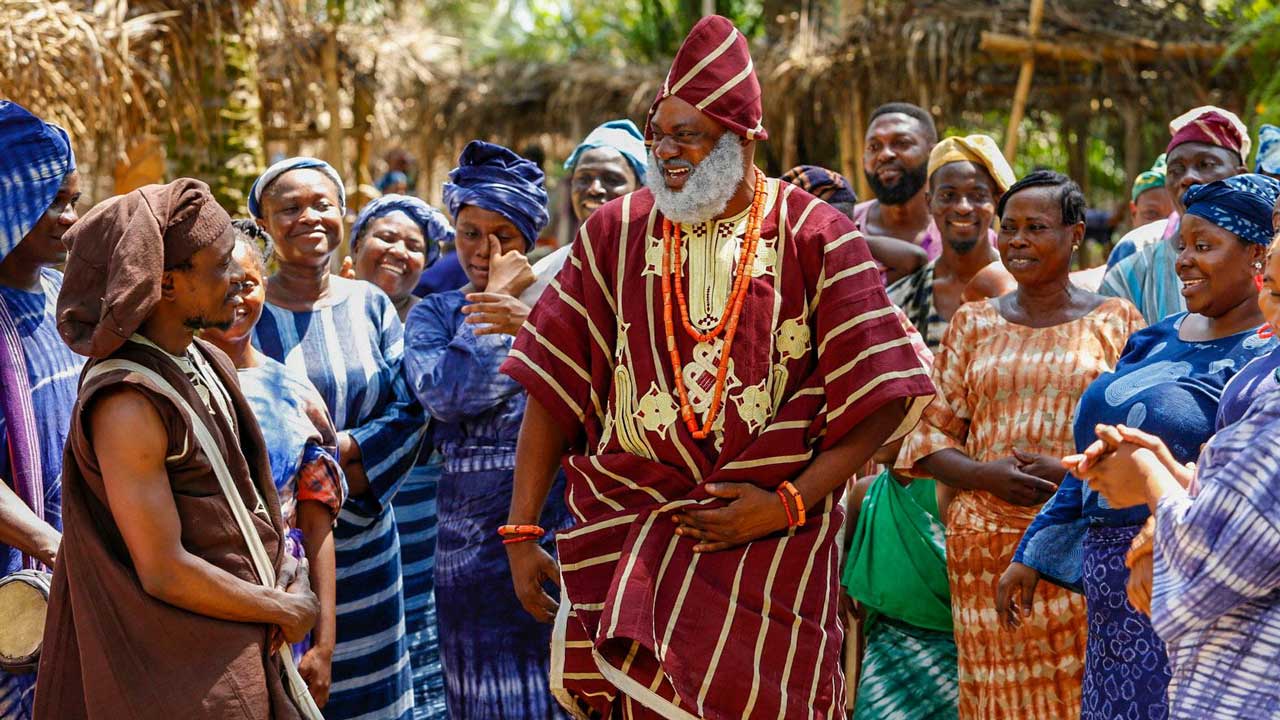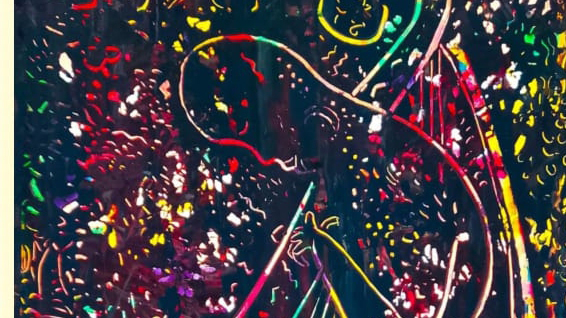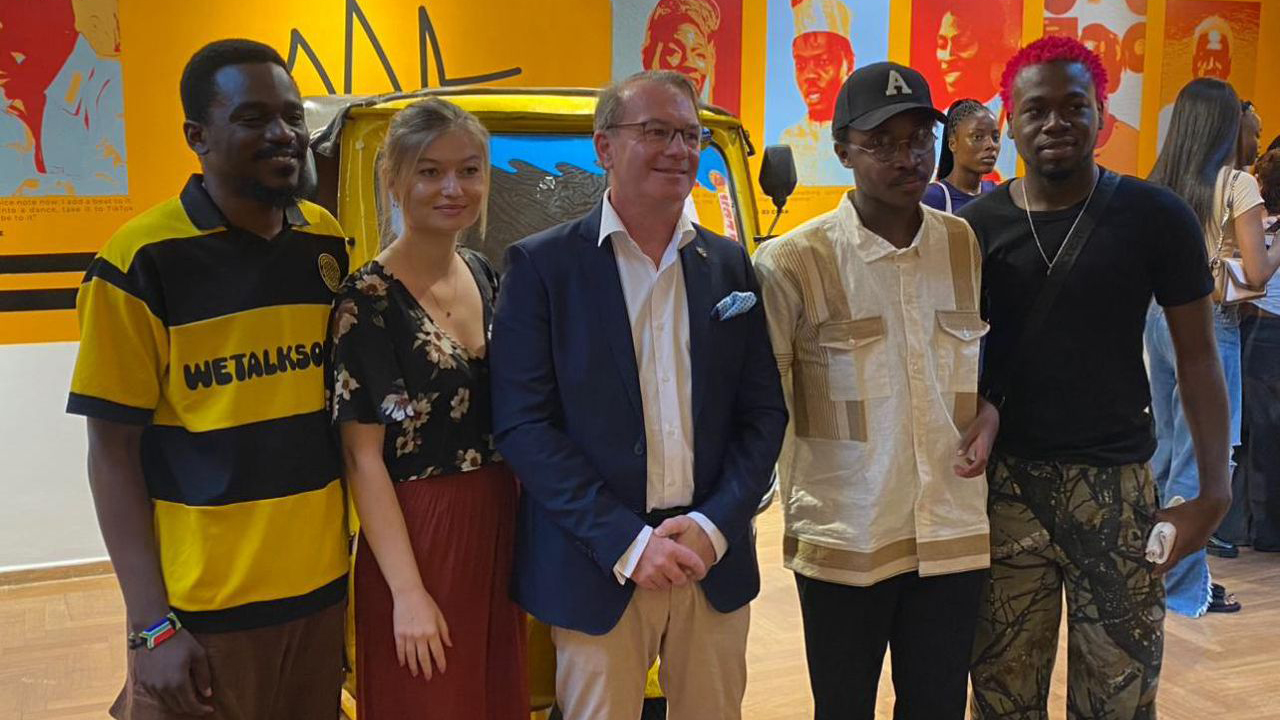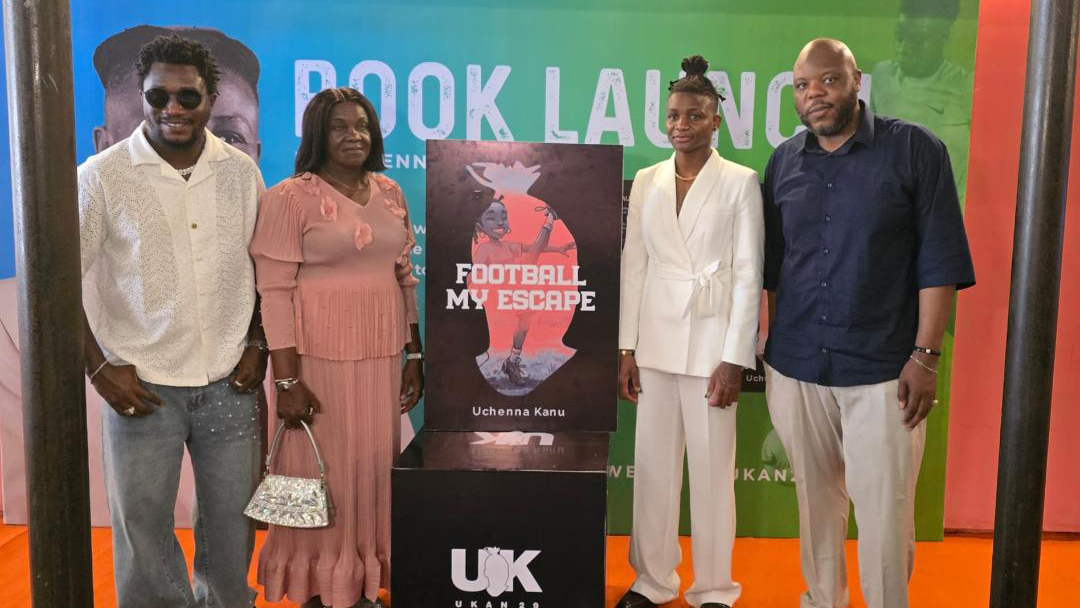
Photo: Courtesy EbonyLife Media
In the last few years, there has been a meteoric rise in creative input to economic activities in the world. Nigeria has equally gone through same transition, with a whole new generation of creators already empowered and given access to knowledge and human culture at the click of a mouse – and a concurrent box of tools for expression and self-learning writes GREGORY AUSTIN NWAKUNOR.
The handdog expression on the faces of stakeholders this evening, when former Senior Special Assistant to the President, Federal Republic of Nigeria (Country Risk Assessment and Evaluation), Felix Alaita, who steered the idea of an Executive Bill, to be known as Creatives Industries Development Bill, said: “We want to have a platform that will enable the creative industries grow from where they are now to where they ought to be, in a larger scope.”
Alaita had a mission to ensure that the bill was ready for his principal’s assent before May 29, 2023. But he was not successful. Stakeholders insistence that it was not inclusive and the Minister’s decision not to support it as an Executive Bill made the bill to die.
On Tuesday, June 13, President Bola Ahmed Tinubu will inaugurate the 10th National Assembly (NASS) and many expect that this assembly takes the creative industry to new heights.
At the onset of the Fourth Republic, the Committee for Relevant Art (CORA) had hosted a stampede to present the sector’s agenda. The Assembly had former Sole Administrator of Culture, Colonel Tunde Ainukhatemon Akogun (rtd), and the writer and former Association of Nigerian Authors (ANA), Dr. Wale Okediran, as members.
Since 1999, it has been impossible to have an all-encompassing bill for the creative industry, which will have both culture policy and endowment fund for the arts as components.
President Tinubu’s choice of Culture and Tourism minister, no doubt, will determine whether there is going to be a strong presence of culture in government’s calculations and not the tokenism that it currently enjoys.
Speaking at the book launch of former Lagos State Commissioner for Tourism, Arts and Culture, Steve Ayorinde, titled, 30: Three Decades of the New Nigerian Cinema, Tinubu, who was represented by Kehinde Bamigbetan, said the future of Nigeria depends on what happens to the sector.
Tinubu said his government would take the industry further by creating conditions necessary for its growth. The President said he would support the sector and make it easier for it to create the desired technical quality such that the rich industry is positively reflected.
The National Association of Nigerian Theatre Arts Practitioners (NANTAP) also called on the President to position the creative industry as an economic mainstay in Nigeria.
The association, in a statement signed by its president, Israel Eboh, raised the need for a stand-alone ministry for culture and tourism. It said such decision has the potential to take Nigeria out of the economic woods.
It called on the President to give Nigeria a truly creative industry and provide the catalyst needed to drive a new, and alternative source of revenue for a viable and sustainable economic growth.
Unfortunately, the industry itself has not made a credible case to the government on how this can be achieved. The industry is made up of great artists, but not businessmen, hence, the challenge.
Currently, the country’s culture policy is outdated and its content needs to be fine-tuned to meet up with modern demands. According to the General Manager of National Theatre, Prof. Sonny Ododo, “if the Cultural Policy had been in existence, it is supposed to give birth to the Creative Industry Development Bill (CIDB) or a section of that policy will now explore and maximise what we can achieve in the creative industry and also in tourism. It is unfortunate that so many years now there is a cause for review and it is yet to see the light of day. Each time I make enquiry I am told it is ready; it’s just for final review and Federal Executive Council (FEC) approval before it can become effective. I hope that will be done, because when that policy comes to stay and it’s being implemented, the creative space will heave a huge sigh of relief.”
The Guardian gathered that there was an attempt at reviewing the culture policy in 2008, some 21 years after it was formulated, but the exercise came rather late.
According to the United Nations Educational, Scientific and Cultural Organisation (UNESCO) guidelines, a cultural policy shall be reviewed at least once in eight years. So, it was more than twice a belated exercise. Also, due to the restricted circulation of the text, it wasn’t addressed to the Nigerian people as sovereign owners.
This contrasted sharply with the case in 1988, when culture administrators mobilised universities, journalists, trade unionists, and civil society representatives, among others, to make their input to the implementation strategies.
But the belated 2008 exercise wasn’t like that. There was a time in the Nigerian film industry (pre-Nollywood) when film financing had a semblance of structure and formality, as both government and corporate entities played active role in providing easy access to funds for filmmakers.
The Nigerian Film Corporation (NFC) and the now-defunct Nigerian Film Distribution Company (NFDC) were disposed to granting filmmakers production loans up to N100,000, where a feature film could be produced with a budget ranging from N300,000 to N500,000 then, before the structural adjustment programme (SAP).
While corporate entities were also willing to finance films, as could be seen in IMB Securities N3 million for Francis Oladele’s Oju Aiye (Eye of the World) and Rims Merchant Bank and Wema Bank N815,000 support for Afolabi Adesanya’s Ose Sango (Sango’s Wand).
The industry also appeared to have gained some level of mileage with the $200 million Nollywood intervention fund announced during the President Goodluck Jonathan’s administration.
Also, the Central Bank of Nigeria (CBN), in collaboration with the Bankers’ Committee, via a circular dated July 19, 2019, announced the Creative Industry Financing Initiative (CIFI) to improve the creative’s access to financing.
But all these are not captured in a policy that makes it mandatory for a creative industry development fund that would encourage Public-Private Partnership and provide incentives for creative entrepreneurs and workers.
They were handled rather perfunctorily, without any serious demonstration of commitment. The documents enabling them were not given legal teeth to make them justiciable.
The National Bureau of Statistics (NBS) believes that the industry, which comprises five sub-sectors: Media and Entertainment, Beauty and Lifestyle, Visual Arts, as well as Tourism and Hospitality, employs about 4.2 million people across the five sub-sectors. “Our projections also suggest that the creative sector can potentially create an additional 2.7 million jobs in the next four to five years,” the bureau noted.
The proposed bill by Alaita made fantastic plans for the sector. Called the Nigeria Creative Industry Development Bill (CIDB), it is believed, would enhance the industry’s capacity.
The Bill seeks to lift the industry through a well-designed action plan centred on funding, incentives, research, skills and training. A Senior Advocate of Nigeria, Chief Anthony Idigbe, in his welcome address at the 2018 Punuka yearly lecture with the theme: ‘Building sustainable businesses in film, television and music sectors: Challenges for the industry and government,’ said, “we are in an era in Nigeria where more attention needs to be given to the creative industry to maximise its potential. Consequently, there is a need to focus on creating policies for these sectors that prioritise growth and encourage sustainability to engineer the transition from a creative industry to the development of a thriving creative economy.”
However, over the years, unclear policies, outdated laws, improper regulation and lack of governmental or substantial private sector investment are some of the drawbacks hindering the maximisation of creative industry potential in Nigeria.
Pointing to the 1930s, stakeholders say the severe economic crisis — the Great Depression — created an atmosphere for artistic imagination and creative expression in America.
As part of Franklin Roosevelt’s New Deal and its Works Progress Administration effort, the Federal Government hired more than 10,000 artists to create works of art across the country, in a wide variety of forms — murals, theatre, fine arts, music, writing, design and more.
It was part of a plan to stimulate economic recovery for a country reeling from the Great Depression, widespread poverty, and high unemployment.
The Bill also aims to bridge the gap between the Nigerian creative industries and government to build a vibrant, profitable, rapidly growing creative sector by transforming the creative space through a legal, regulatory and institutional framework, with an executable action plan.
Alaita had said: “We have put together many items that are supposed to help improve the business landscape. The Bill is going to establish a Commission, which will be an umbrella agency overseeing everything that has to do with the creative industries, and interfaces with every other Ministry, Department and Agencies (MDAs) on your behalf. The idea is to create a one-stop centre, where everything about the industry can be resolved, to reduce the bottlenecks and bureaucracies that we normally face when we do business in Nigeria.”
A creative sector bill will establish a fund that is supposed to create a framework for access to funds at the various layers – from the person who decides on writing a book to the established ones like yourselves, etc.
The different layers of funding will be available through a process to be created in the Act. It also establishes a system in place to ensure that your intellectual property (IP) can be used to access funding, which is a challenge that has been identified in the creative industries. He explained, the Bill would provide a holistic, child-focused talent-hunting curriculum for children in schools, so they grow up with a clear knowledge of their creative talents and how exactly to tap into them as future career or hobbies.
The industry is not just as a purveyor of leisure-based pastimes, but also as a vital economic resource – which technological changes have enabled. In several countries, the growth of creative jobs is outpacing employment creation in other sectors, including manufacturing.
It is believed that Nigeria can have a huge chunk of the $2.9 trillion creative industry market share through proper planning and development of local infrastructure, and tax rebate for companies investing in the sector.
This sector has somewhat solidified the gap left by other sectors in the country – to an extent – as the once neglected industry is now projected to reach a valuation of $15 billion by 2025.
The Beauty and Lifestyle industry currently employs 2.1 million people, and those numbers are projected to reach 2.9 million by 2025. The Entertainment industry currently employs 1.4 million people, and it is estimated that those numbers will reach 2.1 million by 2025. Visual Arts is the third highest employer in the creative sector with 400,000 people under its employment, with figures expected to reach 1.2 million by 2025. Tourism, Hospitality and Media were seen to employ the least in the sector with Tourism and Hospitality having 200,000 people under their employment, while Media had 100,000.
In terms of revenue and earnings, a breakdown of the $15 billion shows that Nigeria is to generate $7.7 billion in 2021, $9 billion in 2022, $10.7 billion in 2023, $12.6 billion by 2024 and $14.8 billion by 2025. However, data provided by Statista shows that Nigeria’s creative sector performed better than the aforementioned projections.
The data shows that Motion Picture and Music Recording accounted for roughly $53.5 billion of Nigeria’s GDP in 2021. Telecommunications and Information Services stood at $647 billion, representing the most valuable industry in Nigeria’s creative sector. While Broadcasting made $3.1 million, in 2022, the creative sector made $4.2 billion. This is according to reports released by Jobberman, Nigeria premier recruitment service.






